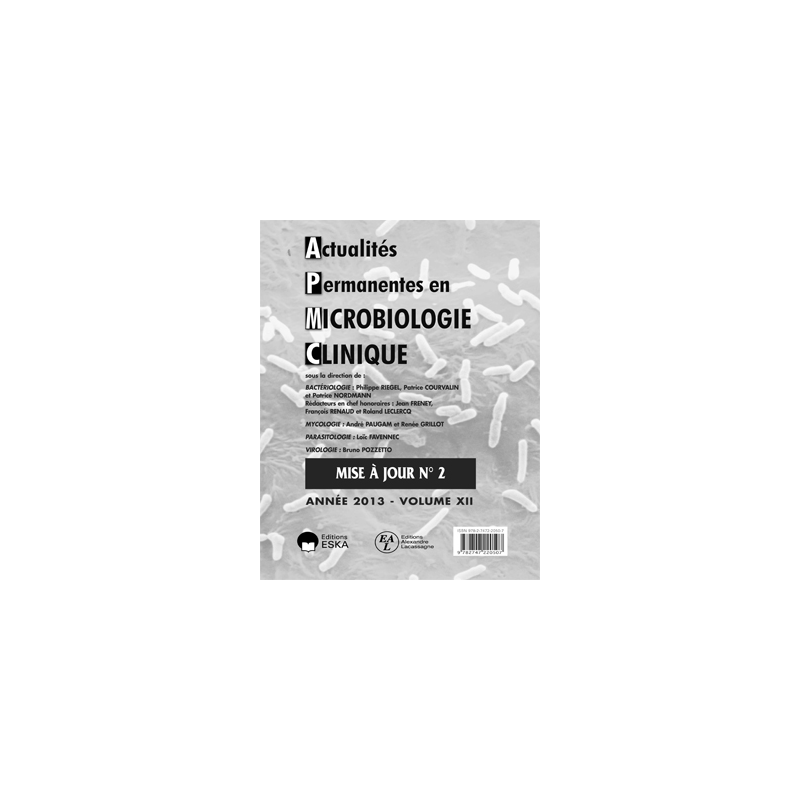



 Security policy
Security policy
(edit with the Customer Reassurance module)
 Delivery policy
Delivery policy
(edit with the Customer Reassurance module)
Résumé
Lenvironnement hospitalier est constitué de lensemble des éléments liquides, solides ou gazeux qui environnent ou entrent en contact avec les patients, les visiteurs ou le personnel dans une structure hospitalière. Entrent dans cette définition, lair (médical ou atmosphérique), les surfaces inertes (mobilier, linge, instrumentation, dispositifs médicaux), les surfaces vivantes (mains et tenues du personnel), les eaux (réseau, sanitaire, piscines, dialyse ), les solutés (préparations injectables, solutions dantiseptiques, pommades ), lalimentation
En pratique courante, les analyses bactériologiques de lenvironnement portent principalement sur les surfaces, lair et les eaux. Les contrôles bactériologiques des endoscopes ont fait lobjet de recommandations (DGS, 2007 ; CCLIN Ouest 2005) tant sur le plan de la technique et des milieux utilisés que sur la fréquence de leur réalisation. Les contrôles alimentaires sont standardisés. Les autres types de prélèvements sont réalisés ponctuellement dans un contexte épidémique ou lors de programmes détude.